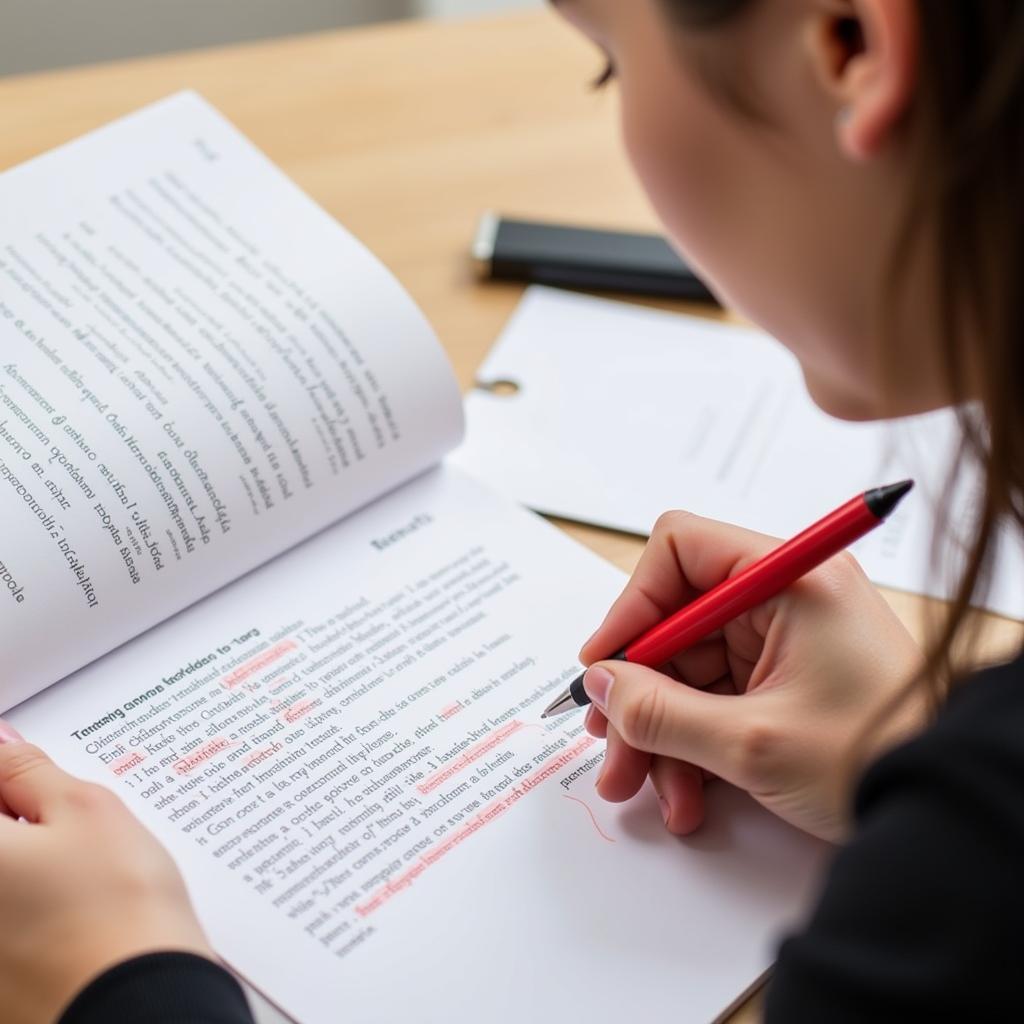Learning from mistakes is one of the most powerful ways to enhance your grammar skills for the IELTS exam. By systematically analyzing and correcting writing errors, you can significantly improve your accuracy and boost your writing band score.
Understanding the Role of Writing Corrections
Writing corrections form the backbone of grammar improvement, especially when preparing for how to improve grammar with feedback. This systematic approach helps identify recurring mistakes and strengthens your understanding of English grammar rules.

Common Grammar Mistakes in IELTS Writing
- Article usage errors
- Subject-verb agreement issues
- Incorrect tense sequences
- Preposition misuse
- Word order confusion
To master these areas, consider how to use articles effectively as your starting point.
Implementing an Effective Correction System
Self-Correction Techniques
- Wait 24 hours after writing before self-correcting
- Read your work aloud
- Use a grammar checklist
- Focus on one grammar aspect at a time
- Keep an error log
Professional Feedback Integration
Working with expert feedback is crucial for practicing grammar with sample essays. Professional IELTS instructors can identify subtle errors that might escape self-correction.
Dr. Sarah Thompson, IELTS examiner with 15 years of experience, notes: “The most successful candidates are those who actively engage with correction feedback, analyzing not just what went wrong, but why it went wrong.”
Advanced Grammar Improvement Strategies
Technology-Assisted Learning
Modern grammar improvement tools can supplement traditional correction methods. Learn more about how to use grammar checkers effectively for optimal results.
Pattern Recognition and Error Analysis
Understanding error patterns is crucial for improving task 2 grammar accuracy. Keep these points in mind:
- Document recurring mistakes
- Analyze the context of errors
- Create personalized grammar rules
- Practice with similar structures
Creating a Grammar Improvement Action Plan
-
Weekly Writing Schedule
- Write at least three practice essays
- Implement corrections from previous feedback
- Focus on problematic areas
-
Review Process
- Create correction summaries
- Track progress over time
- Set specific grammar goals
Professor Michael Chen, IELTS preparation expert, emphasizes: “Consistent practice with focused correction is more effective than sporadic intensive study sessions.”
Maintaining Progress
To ensure continuous improvement:
- Review old corrections regularly
- Create grammar rule flashcards
- Practice corrected structures in new contexts
- Share corrections with study partners
- Set monthly grammar goals
Remember, improving grammar through writing corrections is a gradual process that requires patience and dedication. Focus on progress rather than perfection, and maintain a systematic approach to learning from your mistakes.
Frequently Asked Questions
-
How often should I practice writing corrections?
- Aim for at least 2-3 times per week, allowing time between sessions for reflection.
-
What’s the best way to track grammar improvements?
- Keep a detailed error log and review it monthly to identify progress patterns.
-
Should I use grammar checking software?
- Yes, but as a supplement to, not a replacement for, manual checking and expert feedback.
-
How long should I spend on correcting each essay?
- Allocate 30-45 minutes for thorough self-correction before seeking external feedback.
-
When should I seek professional feedback?
- After completing self-correction to maximize learning from expert insights.